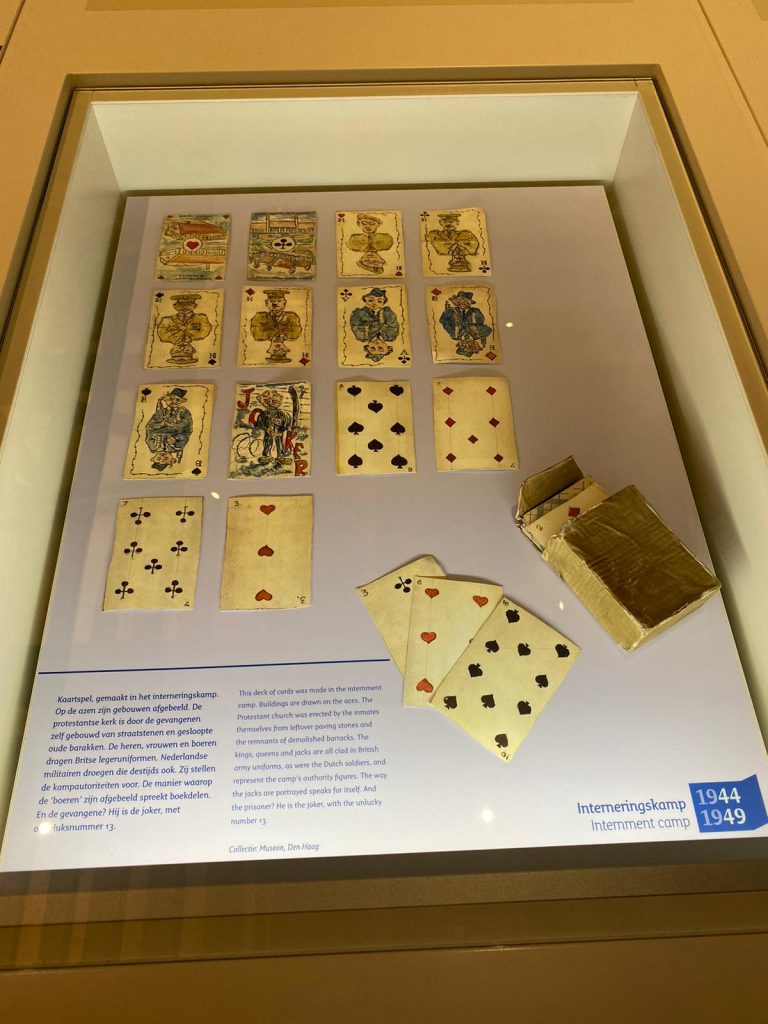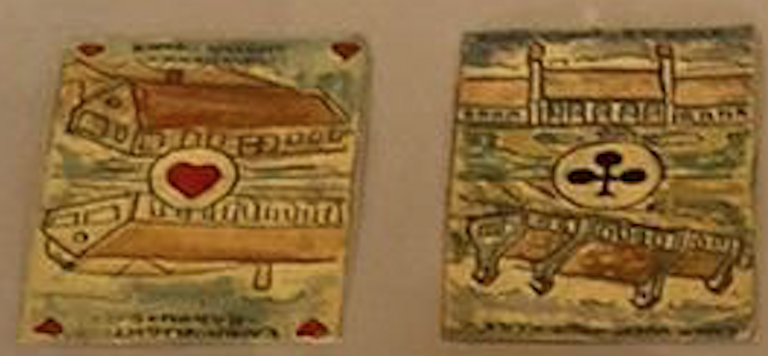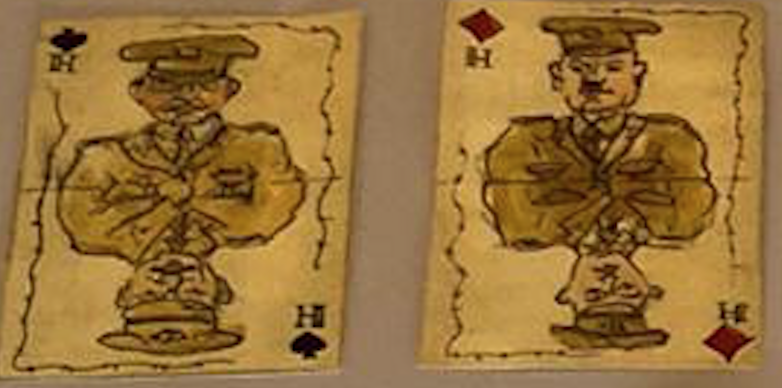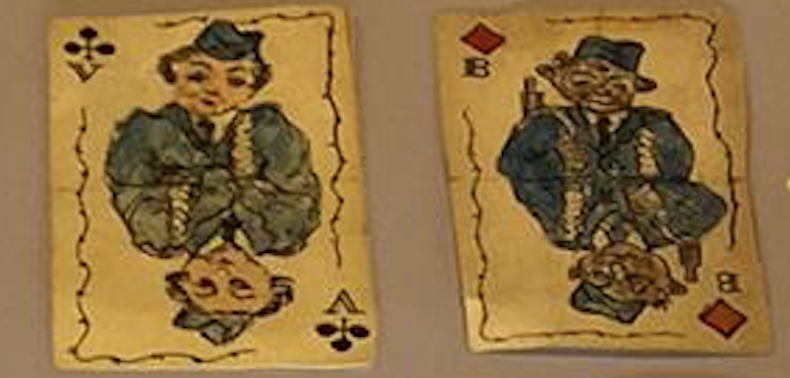 Playing Cards Crafted by Jews at Camp Vught
(January 1943 – Sept. 1944)
Playing Cards Crafted by Jews at Camp Vught
(January 1943 – Sept. 1944)The Card’s Designs
- KINGS / QUEENS / JACKS: These cards represent the SS camp’s authority figures, as they are shown clothed in the British army’s uniform.
- ACES: Buildings are illustrated on these cards, including the Protestant church shown on the ace of spades.

- JOKERS: It is daunting, yet, unsurprising that these cards portray the prisoners themselves. They are shown pinned with the unlucky number 13 on their chest amid barbed wire and dust.



